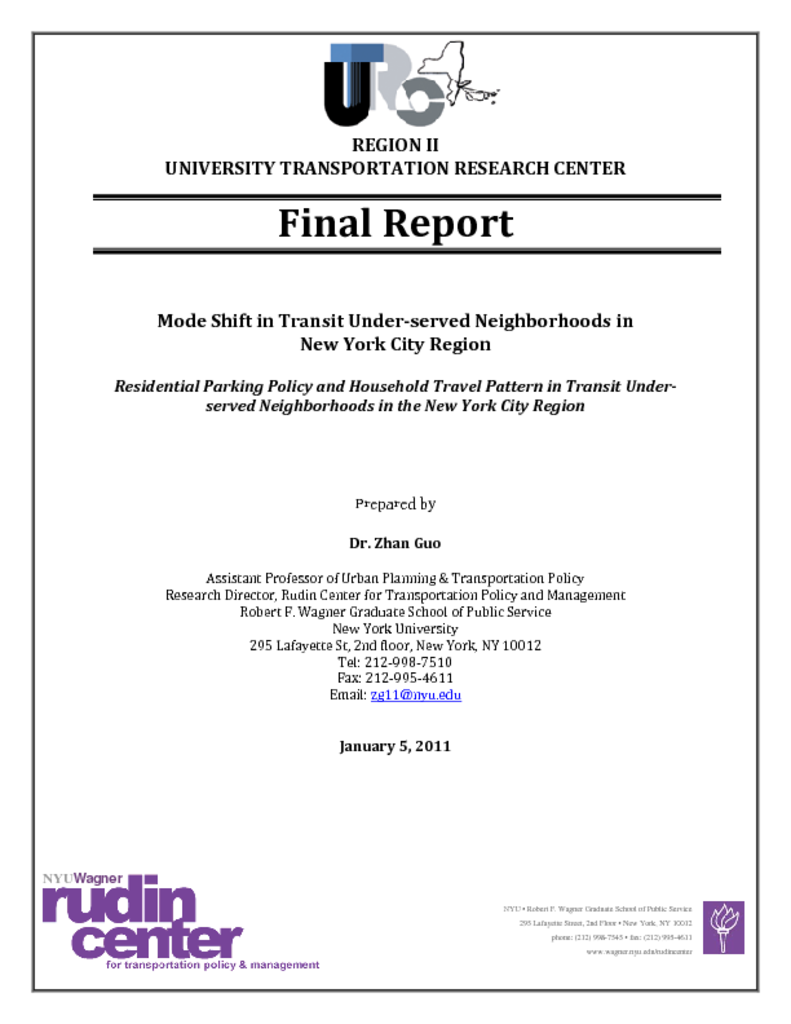This research def ines the concept of transit under-served areas (TUSA), and argues that with the right policies TUSA residents have a great potential to reduce car dependency and usage and switch to publ i c t ransi t . It focuses on one important but often overlooked pol i cy—residential parking, in reshaping t ravel patterns in TUSA neighborhoods, using the New York Ci ty region as an example. Nine hundred households were randomly selected from a regional household travel survey in the New York City region. Their parking types were ident if ied using st reetscape images from Google and Bing, and the types of parking were connected wi th the travel behavior identi fied in the travel survey. It finds that res idential parking could signi ficant ly affects not only household car ownership, but also choice of commuting mode, trip frequency, t rip chaining, and total vehicle time. TUSA households with only on-street parking tend to have fewer cars, make fewer vehicle trips, and drive less overall vehicle time, comparing to households with a garage. However , when on-st reet parking becomes a viable alternative to off-street parking--free, convenient, and readily available, households tend to have more cars and use these cars more often. Based on the resul t s, the research suggest s that in order to discourage car use and encourage mode shi ft, government should limi t the conversion of on-st reet parking to off - s t reet parking through new curb cuts in TUSA neighborhoods with insuf ficient off-st reet parking. In TUSA neighborhoods with sufficient off-st reet parking, government policy should limit the provision and usage of on-street parking through better street design and/or permit fees.




